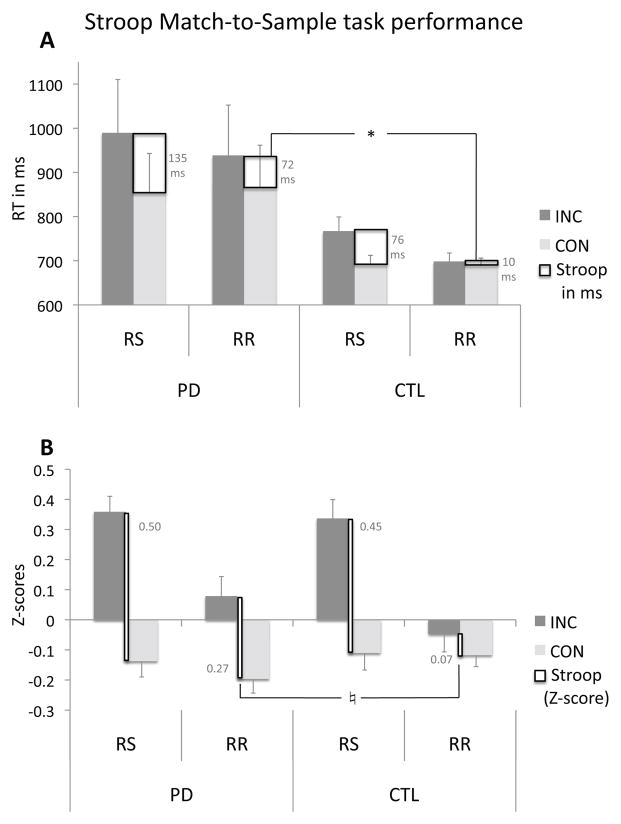Figure 1.
Stroop Match-to-Sample task performance of patients with mild Parkinson’s disease (PD) and healthy controls (CTL). (A) Mean reaction times (RT) and (B) Z-scores and S.E. to incongruent (INC) and congruent (CON) Stroop conditions for response switching (RS) and response repetition (RR). Stroop effects are defined as the difference in RT between incongruent and congruent conditions. Z-scores depict the condition-specific deviation in response latency corrected for each person’s own motoric response speed. Negative values illustrate response facilitation and positive values response slowing. For (B), an ANOVA using Z-scores confirmed the Stroop-by-response block interaction with greater Stroop effects for RS than RR (F(1,20)=15.95, p<0.001). A MANOVA testing group differences for Stroop-RS and Stroop-RR (ZINC minus ZCON) confirmed that both groups had similar Stroop-RS effects (F(1,20)=0.17, ns). The significantly (*) greater Stroop-RR effect in PD than CTL using RT measures (A) emerged as a trend (♮) using Z-scores (F(1,20)=3.18, p=0.09) (B), i.e., when controlling for group differences in motoric slowing and testing interference processing per se.

